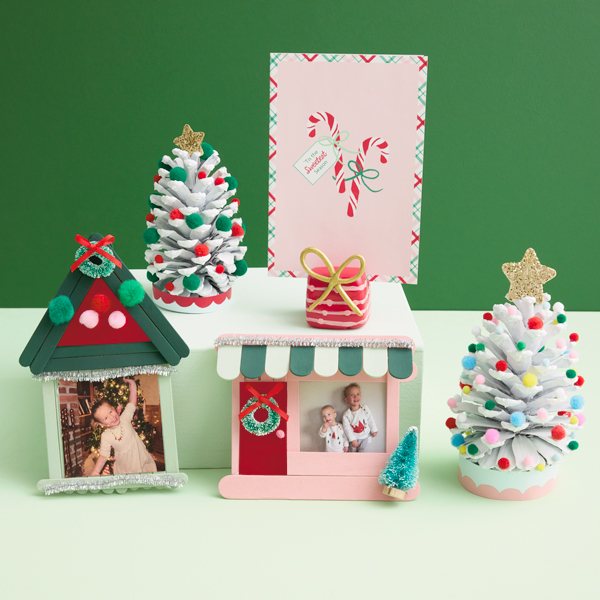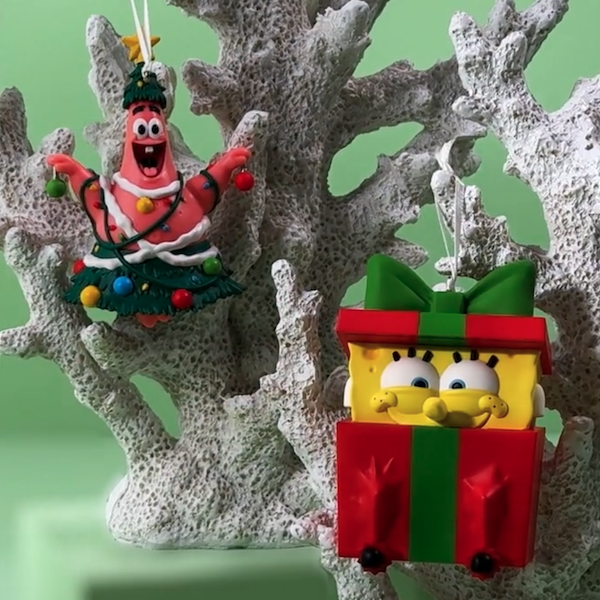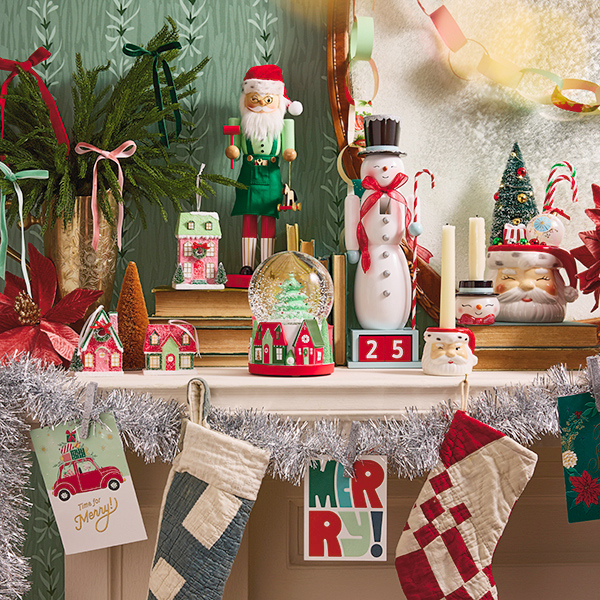How to Welcome Your Child’s LGBTQ+ Partner to the Family

You’re the proud parent of a newly engaged LGBTQ+ person: Congratulations! You’re happy for them, excited about the wedding—and maybe a little unsure about what comes next. If you have questions about welcoming your child’s LGBTQ+ partner into the family, we have some tips.
Inspired? Create and share by tagging @hallmarkstores.
Relax—you’ve got this
Perhaps this is your first foray into in-law territory and you want to get it right. Or you’re not sure how an LGBTQ+ wedding is different. And, of course, you want the new couple to feel welcome in your home and comfortable around your family and close friends.
Good news: If you’re racking your brain for ways to make someone feel at home, your heart’s already in the right place. Here are some simple, thoughtful ways you can show your support.
Ask questions
As every couple does, these two will want their engagement and wedding to reflect their unique relationship. From the wedding showers to the venue, who officiates, their vows, and their attire—every choice is an opportunity to express themselves and their love for each other.
When you think about how many wedding traditions are based on gender roles, it’s easy to see where differences might arise:
- LGBTQ+ couples likely have a wedding shower, not a bridal shower—and both probably attend.
- They might walk down the aisle together—or not at all.
- Their wedding parties may have multiple genders on both sides.
From parents’ roles in planning to the first dances, they’ll have a lot to figure out. Ask what role they’d like for you to play and how you can support them.
Language is also important when describing LGBTQ+ relationships. If you’re not already aware, you can ask about:
- Which gender pronouns they use
- Whether they want to use gendered terms like “bride” and/or “groom”
- Their titles, for example, Mr., Mrs., Ms., Mx.
- The last name or names they’ll use once they’re married
And don’t hesitate to do some research of your own, so the couple doesn’t carry the entire emotional load. All marriages encounter challenges and frustrations; educate yourself about what makes an LGBTQ+ relationship unique and you’ll be in a better position to offer support.
Share your traditions
From favorite summer menus to elaborate holiday customs, we all have traditions that make us family. The more you share, the more welcome your newest member will feel. And that’s especially important when who a person is and who they love don’t always meet with universal acceptance.
Through simple actions and big gestures, you can make your child’s fiancée feel included and loved. Here are some ideas:
- Be open-minded about roles and traditions that may have been gender-specific in the past. It may be time to welcome a new face in the kitchen or around grill.
- Include both names on any card you send—“Dear Lindsay and Cady”—to truly acknowledge their partnership. Include them on family text chains and emails, too—and understand if they opt out.
- Ask questions instead of making assumptions about what family activities they do and don’t want to participate in—and err on the side of making an invitation. Extend the invitation directly: “Cady, we really look forward to seeing you at Christmas.”
- Asking about their needs—from dietary restrictions to faith customs to their own family traditions—lets them know you care about them.
- Share the secrets: family recipes, inside jokes, handed-down histories, funny stories. Do everything you can to make your new in-law feel included.
Celebrate!
Weddings are celebrations of dedication, love, and the joining of families. This is surely one of the biggest events in your grown-up child’s life and should be met with the open, unabashed enthusiasm and admiration as every family wedding.
While acceptance for LGBTQ+ relationships continues to grow, positive words from family and allies still matter. Right from the start, let the happy couple know you’re on their side and proud of their relationship and commitment to one another. If they’re comfortable with it, share photos of their happy moments with friends in person and in social media.
After the big day, continue to support them, offer encouragement, and share their joys—and struggles. Marriage isn’t always easy, and they will appreciate having family in their corner.
Perhaps the best advice to anyone welcoming a child’s partner to the family is to see what your child sees in them. They’ve fallen in love with someone who’s changed their world for the better. And now, that wonderful person is a part of your family. Lucky you!
Shop LGBTQ+
See allYou may also like
See more-
Calendar Flip Spring Forward: March 2026 Holidays and Observances
Color us excited! From the wearin’ of the green and more sunny fun to colorful Holi festivals and celebrating crayons...
-
Calendar Flip Welcome a New Year: January 2026 Holidays and Observances
HAPPY NEW YEAR! If that hurt your head, you might have celebrated a little too much. When you’re feeling better, we h...
-
Calendar Flip Hello, Love: February 2026 Holidays and Observances
Let’s warm up this cold month with love and connections. From valentine cards to dressing up your pet, this month has...
-
Christmas 3 Christmas gift wrap ideas to match your holiday personality
If you’re anything like me, the holiday season can make you tap into different sides of yourself. Maybe you become th...
-
Gifting 60+ Peanuts® Snoopy gifts to help fans channel their favorite beagle
It was a dark and stormy night in the winter of 2015. I was 17 years old, overwhelmed with AP classes, senior-year st...
-
Christmas 3 Christmas kids craft ideas, plus activities for even more easy holiday fun
From decorating the house to baking cookies, the Christmas season gives us so many opportunities to get creative and ...
-
Christmas The best Christmas gift idea: Bikini Bottom BFFs
Got a bestie who's as silly as you? Or one who's there through all of life's storms with a smile? Then we think this ...
-
Christmas Which Disney Pixar character is your favorite? 🤔
Thankfully, with so many beloved Disney Pixar character Keepsake Ornaments, you won't have to choose a favorite this ...
-
Christmas Not having Cher on your tree? As if! 💅
If you're a Millennial, we predict you will be majorly, totally, butt crazy in love with this Clueless Keepsake Ornam...
-
Christmas 20 vintage Christmas ideas to turn up the charm this holiday season
When I think of my perfect Christmas, vintage vibes are always what come to mind first. Santa’s sleigh in a dreamy wi...
-
Christmas 20+ ideas to help you plan your trip to the Hallmark Christmas Experience
Ever wanted to step inside of a picture-perfect Hallmark Christmas movie? Or travel to a place where you could immers...
-
Christmas Sit fireside with the cutest snowfolks around!
A campfire might seem like the least likely place to find a few snowmen hanging out, but if it's cold enough, even th...
-
Christmas With so much magic, we can’t choose a favorite!
Every Keepsake Ornament is magical, but our ornaments with light, sound and music are in a class all their own. From ...
-
Christmas Stocking stuffer ideas for literally everyone on your list
The stocking stuffer struggle is real. By the time you’ve bought your main presents, you feel like you’re all out of ...
-
Christmas You love Keepsake Ornaments…we love rewarding you! 🥳
Collecting Keepsake Ornaments isn't just a hobby for you—it's a passion! And that kind of enthusiasm is something we ...
-
Christmas 60+ Christmas decorating ideas to deck your halls—and every other space!
If you’re searching for Christmas decorating ideas to make all your spaces extra jolly and put you in a merry mood, y...
-
Christmas Dance your way to Christmas morning 🦛🎄
Keep little ones giggling and grooving all holiday break-long with this musical dancing Christmas hippo plush! Does i...
-
Winter Lean into the Season: winter ideas to make the season bright and extra cozy
There are two types of people in this world: those who love winter and those who’d endure an eternity of wearing wet ...
-
Christmas What happens when you put a Keepsake Artist in front of the camera? 🤔
Keepsake Artists are masters of turning everyday moments into cherished Christmas memories, in the form of beautifull...
-
Christmas Get ready—the Grinch is headed your way for the holidays! 💚
He'll snatch up your boxes. He'll snatch up your bags. He'll rifle through presents, regardless of tags! But one thin...





















